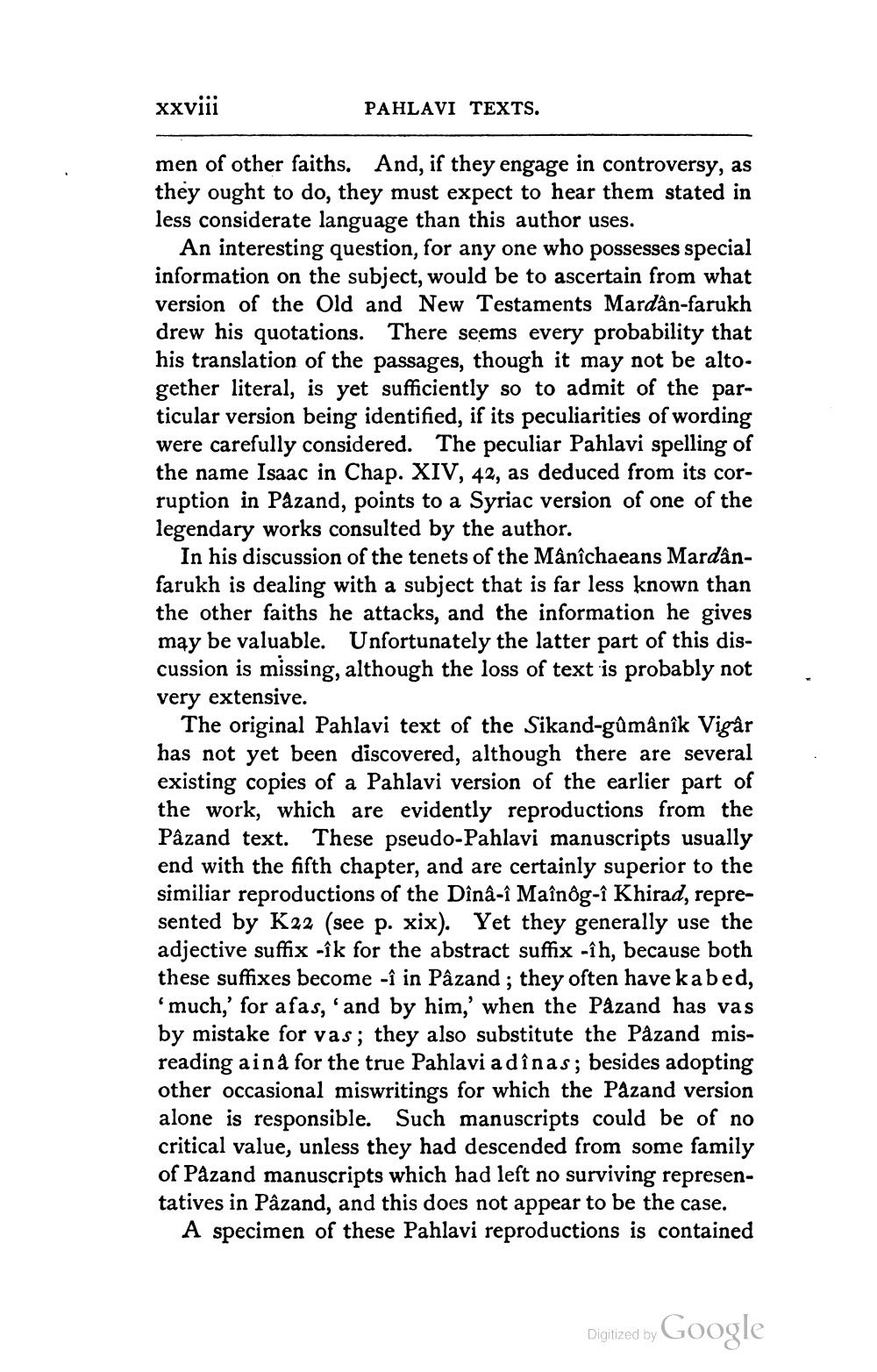________________
xxviii
PAHLAVI TEXTS.
men of other faiths. And, if they engage in controversy, as they ought to do, they must expect to hear them stated in less considerate language than this author uses.
An interesting question, for any one who possesses special information on the subject, would be to ascertain from what version of the Old and New Testaments Mardân-farukh drew his quotations. There seems every probability that his translation of the passages, though it may not be altogether literal, is yet sufficiently so to admit of the particular version being identified, if its peculiarities of wording were carefully considered. The peculiar Pahlavi spelling of the name Isaac in Chap. XIV, 42, as deduced from its corruption in Pazand, points to a Syriac version of one of the legendary works consulted by the author.
In his discussion of the tenets of the Mânîchaeans Mardânfarukh is dealing with a subject that is far less known than the other faiths he attacks, and the information he gives may be valuable. Unfortunately the latter part of this discussion is missing, although the loss of text is probably not very extensive.
The original Pahlavi text of the Sikand-gûmânîk Vigår has not yet been discovered, although there are several existing copies of a Pahlavi version of the earlier part of the work, which are evidently reproductions from the Pâzand text. These pseudo-Pahlavi manuscripts usually end with the fifth chapter, and are certainly superior to the similiar reproductions of the Dînâ-î Maînôg-î Khirad, represented by K22 (see p. xix). Yet they generally use the adjective suffix -îk for the abstract suffix -îh, because both these suffixes become -î in Pâzand; they often have kabed, 'much,' for afas, and by him,' when the Pazand has vas by mistake for vas; they also substitute the Pazand misreading aina for the true Pahlavi a dînas; besides adopting other occasional miswritings for which the Pazand version alone is responsible. Such manuscripts could be of no critical value, unless they had descended from some family of Pazand manuscripts which had left no surviving representatives in Pâzand, and this does not appear to be the case.
A specimen of these Pahlavi reproductions is contained
Digitized by Google




